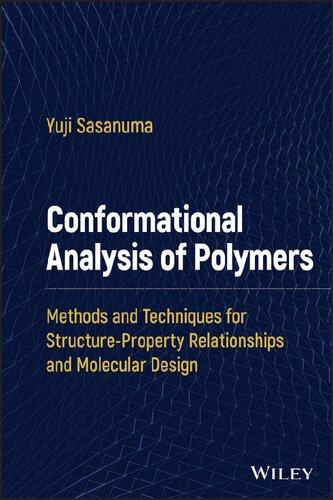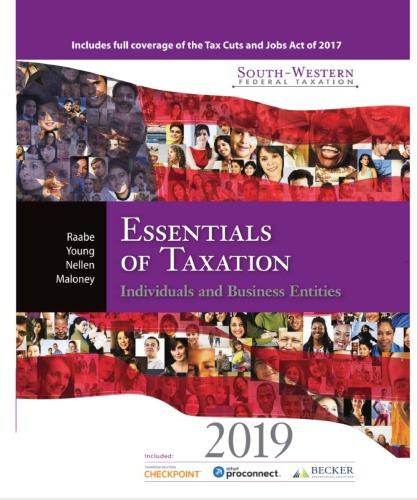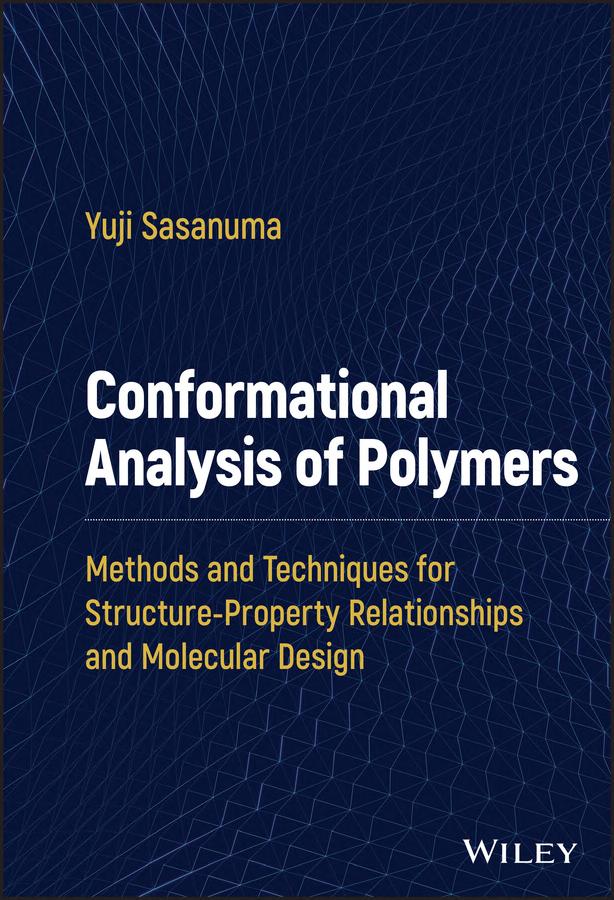ConformationalAnalysisofPolymers
MethodsandTechniquesforStructure-Property
RelationshipsandMolecularDesign
YujiSasanuma
ChibaUniversity(retired)
Chiba,Japan
Asmythanksto thosewholedmetoscience, thosewhohaveworkedwithme, and myfather,mother,wife,andson
Contents
Preface xii
Acknowledgments xvi
AbouttheAuthor xvii
Acronyms xviii
PartIFundamentalsofPolymerPhysicalChemistry 1
1StereochemistryofPolymers 3
1.1Configuration 3
1.2ConnectionTypeofMonomericUnits 5
1.3NitrogenInversion 5
1.4Conformation 8
1.5SecondaryStructure 9
1.6DoubleHelix 11
2ModelsforPolymericChains 13
2.1SpatialConfigurationofPolymericChain 13
2.2FreelyJointedChain 13
2.3FreelyRotatingChain 15
2.4SimpleChainwithRotationalBarrier 16
2.5GaussianChain 17
3LatticeModel 21
3.1LatticeModelofSmallMolecules 21
3.2Flory–HugginsTheory 22
3.2.1EntropyofPolymericChain 22
3.2.2EnthalpyofMixing 25
3.2.3ChemicalPotential 26
3.2.4Excluded-VolumeEffectI 28
3.2.5Excluded-VolumeEffectII 32
10PeriodicQuantumChemistry 99
10.1DirectLatticeandReciprocalLattice 99
10.2BlochFunction 100
10.3One-electronCrystalOrbital 101
10.4StructuralOptimization 102
10.5CrystalElasticity 104
10.6VibrationalCalculation 108
10.7ThermalChemistry 110
10.8Cohesive(InterchainInteraction)Energy 112
PartIIIStatisticalMechanicsofChainMolecules:Rotational IsomericStateScheme 115
11ConventionalRISScheme 117
11.1ChainDimension 121
12RefinedRISScheme 125
12.1RISSchemeIncludingMiddle-rangeIntramolecular Interactions 129
13Inversional–RotationalIsomericState(IRIS)Scheme 137
13.1PseudoasymmetryforPolyamines 137
13.2Inversional–RotationalIsomerization 137
13.3StatisticalWeightMatricesof Meso and Racemo di-MEDA 138
13.4StatisticalWeightMatricesofPEI 139
13.5DiadProbabilityandBondConformation 142
13.6CharacteristicRatio 144
13.7OrientationalCorrelationBetweenBonds 145
13.8SolubilityofPolyamines 148
14RISSchemeCombinedwithStochasticProcess 151
14.1PolymericChainswithInternallyRotatableSideChains 153
PartIVExperimentalMethods 161
15NuclearMagneticResonance(NMR) 163
15.1ConformationalAnalysisofIsotacticPoly(propyleneoxide) 163
15.1.1 1 HNMRVicinalCouplingConstant 164
15.1.2AbinitioMOCalculation 168
15.1.3RISAnalysisofBondConformations 171
15.1.4Configuration-dependentProperties 172
15.2Carbon-13NMRChemicalShiftsofDimericPropyleneOxides 173
15.2.1TheoreticalBasis 175
15.2.2 13 CNMRSpectraandAssignment 176
15.2.3CalculationofChemicalShiftbyRISScheme 179
15.3ModelCompoundofPoly(ethyleneterephthalate) 181
16ScatteringMethods 187
16.1StaticLightScattering(SLS) 187
16.1.1InstrumentationandSamplePreparationforSLS 189
16.1.2ApplicationofSLS:ChainDimensionsofPolysilanesinthe Θ State 191
16.2DynamicLightScattering(DLS) 195
16.2.1ApplicationofDLS:SizeDistributionofPolystyreneLatex Particles 197
16.2.2ApplicationofSLSandDLStoPoly(N -methylethyleneimine) Solutions 198
16.3Small-angleNeutronScattering(SANS) 201
16.3.1ApplicationofSANStoAmorphousPET 204
PartVApplications:ConformationalAnalysisandElucidationof Structure–PropertyRelationshipsofPolymers 207
17Polyethers 215
17.1Poly(methyleneoxide)(PMO) 215
17.2Poly(ethyleneoxide)(PEO) 217
17.3Poly(propyleneoxide)(PPO) 226
17.4Poly(trimethyleneoxide)(PTrMO) 228
17.5Poly(tetramethyleneoxide)(PTetMO) 229
18Polyamines 235
18.1Poly(ethyleneimine)(PEI) 236
18.2Poly(N -methylethyleneimine)(PMEI) 237
18.3Poly(trimethyleneimine)(PTMI)andPoly(N -methyltrimethyleneimine) (PMTMI) 238
19Polyphosphines 241
19.1PossibilityofPhosphorusInversion 241
19.2IntramolecularInteractionsRelatedtoPhosphorus 243
19.3RISCalculation 244
19.4FunctionsandStability 248
20Polysulfides 249
20.1Poly(methylenesulfide)(PMS) 249
20.1.1CrystalStructureofPMS 253
24.5.3RISCalculation 339
24.5.4CrystalStructure 340
24.6BiodegradabilityofPolyesters 342
25Polycarbonates 347
25.1Poly(ethylenecarbonate)(PEC)andPoly(propylenecarbonate) (PPC) 348
25.1.1NMRExperiment 351
25.1.2MOCalculation 351
25.1.3RISCalculation 353
25.2Poly(cyclohexenecarbonate)(PCHC) 357
25.2.1MOCalculation 358
25.2.2NMRExperiment 360
25.2.3RISCalculation 361
25.2.4CoherenceNumber 364
26Nylon4 367
26.1MOCalculation 368
26.2NMRExperiment 370
27AromaticPolyester,Polythionoester,Polythioester,Polydithioester, Polyamide,andPolythioamide 373
27.1MOCalculation 375
27.2BondConformation 377
27.3RISCalculation,ThermalProperties,andSolubility 380
28Polysilanes 383
28.1MolecularDynamics 384
28.1.1GeneralProcedures 384
28.1.2PDBSandPDHS 384
28.1.3PMPrS 387
28.2RISCalculation 387
28.3PhysicalProperties 388
29Polyethylene(PE) 391
AFORTRANComputerProgramforRefinedRISCalculationson Polyethylene 399
BAnswersofProblems 423
Bibliography 431 Index 465
morefundamentally,theprimarystructure–whatthecomponentatomsand chemicalbondsareandhowtheyarearranged.Furthermore,scientistshave facedwiththefactthatproteinscomposedofonly20aminoacidsformunique secondary,tertiary,andquaternarystructuresandexhibitspecificfunctions. Consequently,polymerscientistshavereachedtheconceptofmoleculardesign: wemaypredicttheprimarystructure(s)fromwhichthedesiredhigherorder structures,physicalproperties,andfunctionsarerealized.
InJapan,theideaofmoleculardesignwasadvocatedearlyon.In1972,abook consistingofthreevolumes,titled“MolecularDesignofPolymers,”waspublished byTheSocietyofPolymerScience,Japan[239].Inthebook,Kawaidefinedthe moleculardesignasfollows:First,onemustrevealthecorrelationsbetween thechemicalstructuresandphysicalproperties.Next,oneactuallysynthesizes thepolymerwiththestructurethatisexpectedtoshowthedesiredproperties.
Ontheotherhand,Kambara’smoleculardesignisdifferent:whenanewpolymer issuggested,namelyitsconstituentatomsandchemicalbondsarespecified,to predictthestructuresandmorphologytobeformedtherefromisthemolecular design.Kambara’sconceptistopredictthehigherorderstructuresfromthe primarystructure,whereasKawai’sideaismoreidealistic;themoleculardesign shouldbetoproposetheprimarystructurethatactualizessuchhigherorder structures,physicalproperties,andfunctionsasdesired.Inordertorealize eithermoleculardesign,asbothKawaiandKambarasuggested,itisrequisiteto establishrelationshipsbetweentheprimarystructure,higherorderstructures, and,furthermore,ifpossible,propertiesandfunctions.
Forthatpurpose,itisessentialtoelucidatethestructuresandpropertiesof asinglepolymericchain.Fromanexperimentalviewpoint,itissignificantto determinebondconformationsoftheskeletalbondsvia,forexample,NMR andrevealtheconformationalcharacteristicsand,furthermore,toinvestigate theconfigurationalpropertiesofthepolymericchaininthe Θ statefreefrom theexcluded-volumeeffectvia,forexample,scatteringmethods.Fromatheoreticalviewpoint,thefreeenergiesandgeometricalparametersofindividual conformationsofapolymericchainareevaluatedbyquantumchemistry,and theBoltzmannfactorsaresummedoverallconformationstoyieldthepartition functionfromwhichvariousthermodynamicfunctionscanbederivedaccording tostatisticalmechanicaltheorems.
However,apolymerchainformsanenormous(astronomical)numberofconformations.Forexample,undertherotationalisomericstate(RIS)approximation basedonthethreestates(t,g+ ,andg ),asinglepolyethylenechainof100mer shows3200 (approximately2.7 × 1095 )conformations.Theaverage ⟨M ⟩ ofamolecularparameter Mi ,dependingontheconformations,maybecalculatedfrom
where Ei istheenergyofconformation i, N isthetotalnumberofconformations, R isthegasconstant, T istheabsolutetemperature,and Z isthepartitionfunction definedas
Toevaluate ⟨M ⟩,onemustsolvetheSchrödingerequationforeachconformation,obtainitsground-stateenergy,andrepeatthisprocedure N times;however, suchcolossalcomputationsareimpossibleforthetimebeingatleast,apartfrom theremotefuture.Fortunately,statisticalmechanicsofchainmolecules,designatedastheRISscheme,hasbeendevelopedandformulatedasmatrixoperations. AccordingtotheRISscheme,onecanexactlycalculatethebondconformations, variousconfigurationalproperties,andthermodynamicfunctionsofunperturbed polymericchains(lyinginthe Θ state).TheearlystudiesoftheRISschemewere summarizedinFlory’sbook[141],theensuingstudiescanbefoundinMatticeand Suter’sbook[307],andRehahn,Mattice,andSuter’sbookcollectedalmostallRIS modelsreporteduntiltheendof1994[383].
Itisknownthattheconfigurationalpropertiesofunperturbedpolymericchains dependonlyonshort-rangeintramolecularinteractions[141];therefore,theconformationalenergiesmayalsobeevaluatedfromasmallmodelcompoundwith thesamebondsequenceasthatofthepolymer.Inordertoderivetheconformationalenergiesfromquantumchemicalcalculations,therefore,oneneednottreat thepolymeritselfbutthesmallmodelcompoundinstead.TheMOcomputations onthemodelaresufficientlypracticalevenifahigh-levelMOtheoryincluding electroniccorrelationsisemployed,togetherwithlargebasissets.
TheRISschemecanexactlycharacterizeunperturbedpolymericchainsin dilutesolutions,amorphousphases,andmelts.However,polymerscientistshave alsobeendesiringtoacquireprecisetheoreticalinformationonthestructures andpropertiesofsolid-statepolymers.Fortunately,thedensityfunctionaltheory (DFT)underperiodicboundaryconditionshasenabledustocalculatethe electronicstructuresofcrystals[120].Themethodologycanalsobeappliedto polymercrystalsandyieldthefollowinginformation:optimizedcrystalstructure (latticeconstantsandatomicpositions);intermolecularinteractionenergy correctedforthebasissetsuperpositionerror(BSSE);thermodynamicfunctions; andvibrationalspectroscopicfrequencyandintensity.TheDFTcalculationshave shownthatthechainconformationisalsotheprincipalfactorinthestructures andpropertiesofpolymercrystals.
PartIofthisbookdescribesthefundamentalphysicalchemistrythatis necessarytounderstandthecharacteristicsofpolymersandstudytheirconformations.Thecontentsarestereochemistry,polymermodels,andthelatticemodel (theFlory–Hugginstheory);molecularcharacteristics;solutionproperties;and
rubberelasticity.Thispartiswrittensoastobeunderstoodwithoutdifficulty bygraduateandundergraduatestudentswhohavelearnedgeneralchemistry. Derivationsofsomeimportantequations,whicharemostlyomittedfromtextbooksandoriginalpapers,aregivenasproblems,andtheanswersarepresented inAppendixB.
PartIIexplainsthequantumchemistryusedinconformationalanalysis, togetherwithawealthofpracticalapplications.ThecontentsaretheSchrödinger equation,theHartree–Fockmethod,electroncorrelations,DFT,dispersion-force correction,solventeffect,generalstatisticalmechanics,NMRparameters,and periodicDFTforcrystals.
PartIIIexplainstheRISschemeincludingmathematicalexpressionsand theirderivations.ThecontentsaretheconventionalRISscheme,therefined RISscheme,theRISschemeincludingmiddle-rangeinteractions,inversional–rotationalisomericstate(IRIS)scheme,theRISschemewithstochasticprocesses, andtheRISschemewithinternallyrotatablesidechains.
PartIVintroducestypicalexperimentalmethodsforconformationalanalysisof polymers.Thecontentsarebroadlydividedintotwoportions:NMRspectroscopy andscatteringtechniques.TheformerdealswithNMRvicinalcouplingconstants toevaluatebondconformationsandchemicalshiftstodeterminestereo-and regiosequences.Thelatterhalfexplainshowtodeterminemolecularcharacteristics,chaindimensionsinsolutionsandmeltsviastaticlightscattering(SLS), dynamiclightscattering(DLS),andsmall-angleneutronscattering(SANS).
PartVexemplifiesanumberofstudiesonthefollowingpolymers:polyethers, polyamines,polyphosphines,polysulfides,polyselenides,alternatingcopolymers ofamine,ether,andthioetherunits,polyesters,polycarbonates,nylon4,substitutedanalogsofaromaticpolyesters,polysilanes,andpolyethylene.
AppendixApresentsaFORTRANsourcecodeforrefinedRIScalculationson polyethylene.
AppendixBpresentsanswersoftheproblemsgiveninthetext.
Inthisbook,alargenumberofmathematicalsymbolsandphysicalquantities areused;therefore,thesamealphabeticandGreeklettersareoftenassignedto differentparameters,andthesamephysicalquantityisoccasionallyrepresented bydifferentsymbols.Thedihedralangleisdefinedintwoways:theconvention ofpolymerscience,trans ∼ 0∘ andgauche± ∼±120∘ ,andtheIUPACrecommendation,trans ∼ 180∘ andgauche± ∼∓60∘ .Theformerandlatterareemployed mainlyintheRISandMOcalculations,respectively.
Chiba,Japan
August2022
YujiSasanuma
AbouttheAuthor
YujiSasanuma,PhD,FormerlyDepartmentofAppliedChemistryandBiotechnology,GraduateSchoolandFacultyofEngineering,ChibaUniversity,Japan YSwasborninYokohama,Japan,inDecember1956andspenthisboyhood inKawasaki.Hereceivedbachelor’s(1980,supervisors:ProfessorIchitano UematsuandProfessorJunjiWatanabe)andmaster’s(1982,supervisors: ProfessorAkihiroAbeandProfessorIsaoAndo)degreesfromTokyoInstitute ofTechnology(DepartmentofPolymerChemistry).Between1982and1988,he workedinTorayIndustries,Inc.(TorayResearchCenter,Inc.)andengagedin materialcharacterizationbyX-raydiffractionandscattering.In1988,hereturned toTokyoInstituteofTechnologytostudyorientationalandconformational characteristicsofliquidcrystalswithProfessorAkihiroAbe.Afterhereceived doctor’sdegree(1992,chiefexaminer:ProfessorShintaroSasaki)fromTokyo InstituteofTechnology,hemovedtoNationalInstituteofMaterialsandChemical Research(DepartmentofPolymerPhysics)inTsukuba,wherehedevelopeda measurementsystem(equipmentandsoftware)forsmall-angleX-rayscattering andstudiedconformationalcharacteristicsandconfigurationalpropertiesof polyethers(1993–1997).In1997,hemovedtoChibaUniversityandcontinuously grappledwithconformationalanalysisofpolymers.InMarch2022,heretired fromChibaUniversityatthemandatoryageof65.
Acronyms
3HB(R)-3-hydroxybutyrate
ABAMA N -acetyl-�� -aminobutyricacid N ′ -methylamide
AMamorphous
BDMePE1,2-bis(dimethylphosphino)ethane
BDT2-tert-butyl-1,3-dithiane
BGDAbutyleneglycoldiacetate
BMePE1,2-bis(methylphosphino)ethane
BMePhPE1,2-bis(methylphenylphosphino)ethane
BMSeE1,2-bis(methylseleno)ethane
BMSeM1,2-bis(methylseleno)methane
BMSeP1,3-bis(methylseleno)propane
BMTE1,2-bis(methylthio)ethane
BMTP1,2-bis(methylthio)propane
BSSEbasissetsuperpositionerror
CCcoupledcluster
cc-pVQZDunning’scorrelationconsistentbasissets(quadruple)
cc-pVXZDunning’scorrelationconsistentbasissets
CCSD(T)coupledclustersingle–doubleandperturbativetriple
CGSTcontinuoussetofgaugetransformations
CHcyclohexane
CHCcyclohexenecarbonate
CHOcyclohexeneoxide
CIconfigurationinteraction
CIDconfigurationinteractionwithalldoublesubstitutions
CISDconfigurationinteractionwithallsingleanddoublesubstitutions
cis-DMDO cis-2,6,-dimethyl-1,4-dioxane
CONTINconstrainedregularizationmethodforinvertingdata
COSMOconductor-likescreeningmodel
COSYcorrelationspectroscopy
CPcounterpoise
CP/MAScross-polarization/magic-anglespinning
D2Grimme’sD2dispersion-forcecorrection
D3Grimme’sD3dispersion-forcecorrection
DCAdichloroaceticacid
DCB o-dichlorobenzene
DCMdichloromethane
DEPTdistortionlessenhancementbypolarizationtransfer
DFTdensityfunctionaltheory
DFT-Ddensityfunctionaltheorywithdispersion-forcecorrection
di-MEDA N , N ′ -dimethylethylenediamine
DLSdynamiclightscattering
DMB1,4-dimethoxybutane
DMCCdi(methoxycarbonyloxy)cyclohexane
DME1,2-dimethoxyethane
DMEDT2-(1,1-dimethylethyl)-1,4-dithiane
DMF N , N ′ -dimethylformamide
DMP1,2-dimethoxypropane
DMPA2,2-dimethoxy-2-phenylacetophenone
DMSdimethylsuccinate
DMSOdimethylsulfoxide
DMTdimethylterephthalate
DPCMdielectricpolarizablecontinuummodel
DSCdifferentialscanningcalorimeter
DSOdiamagneticspin–orbit
EDCethylenedichloride
EGDAethyleneglycoldiacetate
EGDBethyleneglycoldibenzoate
EGDMSethyleneglycoldi(methylsuccinate)
ELATEonlineapplicationforanalysisandvisualizationofelastictensors
EVexcludedvolume
EVEexcluded-volumeeffect
FCFermicontact
FMB1-fluoro-4-methoxybutane
GIAOgauge-independentatomicorbitalmethod
HBShydrogenbondstrength
HFHartree–Fock
HFIP1,1,1,3,3,3-hexafluoro-2-propanol
H–Hhead-to-head
H–KHohenberg–Kohn
h-PMShexagonalpoly(methylenesulfide)crystal
HSABhardandsoftacidsandbases
HSQCheteronuclearsingle-quantumcorrelation
H–Thead-to-tail
IEF-PCMpolarizablecontinuummodelusingtheintegralequation formalismvariant
IGLOindividualgaugesforlocalizedorbitals
IRISinversional-rotationalisomericstate
IUPACInternationalUnionofPureandAppliedChemistry
LAlacticacid
LAOCOONleast-squaresadjustmentofcalculatedonobservedNMRspectra
LClowcrystallinity
LCAOlinearcombinationofatomicorbitals
LCSTlowercriticalsolutiontemperature
LDlow-powerdecoupling
LDAlocal-densityapproximation
LMlatticemodel
LSlightscattering
LSDAlocalspin-densityapproximation
M2ONH N , N ′ -(ethane-1,2-diyl)dibenzamide
M2OOethane-1,2-diyldibenzoate
M2OS S, S′ -(ethane-1,2-diyl)dibenzothioate
M2SNH N , N ′ -(ethane-1,2-diyl)dibenzothioamide
M2SO O, O′ -(ethane-1,2-diyl)dibenzothioate
M2SSethane-1,2-diyldibenzodithioate
M3ONH N , N ′ -(propane-1,3-diyl)dibenzamide
M3OOpropane-1,3-diyldibenzoate
M3OS S, S′ -(propane-1,3-diyl)dibenzothioate
M3SNH N , N ′ -(propane-1,3-diyl)dibenzothioamide
M3SO O, O′ -(propane-1,3-diyl)dibenzothioate
M3SSpropane-1,3-diyldibenzodithioate
MAAmethyl2-acetoxyacetate
MAHmethyl6-acetoxyhexanoate
MDmoleculardynamics
MEMA N -(2-methoxyethyl)methylamine
MEMS2-methoxyethylmethylsulfide
MOmolecularorbital
MOAA2-methoxy-2-oxoethyl2-acetoxyacetate
MPMøller–Plesset
MP2theMøller–Plessetexpansiontruncatedatsecond-order
MRmonomerratio(ofPStoPMEI)
MTEMA N -(2-methylthioethyl)methylamine
MTT2-methyl-1,3,5-trithiane
NBOnaturalbondorbital
NISneutroninelasticscattering
NOBnotobserved
P(N -tosylEI-ES)poly(N -tosylethyleneimine-alt-ethylenesulfide)
P(EI-EO)poly(ethyleneimine-alt-ethyleneoxide)
P(EI-ES)poly(ethyleneimine-alt-ethylenesulfide)
P(EO-ES)poly(ethyleneoxide-alt-ethylenesulfide)
P2HBpoly(2-hydroxybutyrate)
P2ONHpoly(ethyleneterephthalamide)
P2OOpoly(ethyleneterephthalate)
P2OSpoly(ethylenedithioterephthalate)
P2SNHpoly(ethyleneterephthalthioamide)
Acronyms
PPOpoly(propyleneoxide)
PPPpolyphosphine
PPSpoly(propylenesulfide)
PSpolystyrene
PSOparamagneticspin–orbit
PSTpulsesaturationtransfer
PTetMOpoly(tetramethyleneoxide)
PTMIpoly(trimethyleneimine)
PTrMOpoly(trimethyleneoxide)
PTrMSpoly(trimethylenesulfide)
PTrMSepoly(trimethyleneselenide)
PTTpoly(trimethyleneterephthalate)
PyONHpoly(alkylterephthalamide)
PyOSpoly(alkyldithioterephthalate)
PySNHpoly(alkylterephthalthioamide)
PySOpoly(alkylthionoterephthalate)
PySSpoly(alkyltetrathioterephthalate)
PyTS4poly(alkyltetrathioterephthalate)
QST2synchronoustransit-guidedquasi-Newtonmethodwithtwo moleculespecifications
RISrotationalisomericstate
RMSEroot-mean-squareerror
S4TPAtetrathioterephthalateacid
S4TPA-Piptetrathioterephthalateacidcomplexedwithpiperidinium
SANSsmall-angleneutronscattering
SAXSsmall-angleX-rayscattering
SCsinglechainorsemicrystalline
SCFself-consistentfield
SDspin-dipoleorstandarddeviation
S–FStockmayer–Fixman
SLSstaticlightscattering
SS(V)PEsurfaceandsimulationofvolumepolarizationforelectrostatics
SVPEsurfaceandvolumepolarizationforelectrostatics
TetCEtetrachloroethane
TetMGDBtetramethyleneglycoldibenzoate
tetra-MEDA N , N , N ′ , N ′ -tetramethylethylenediamine
TFAtrifluoroaceticacid
TFEtrifluoroethanol
THFtetrahydrofuran
TMStetramethylsilane
TOCOSYtotalcorrelationspectroscopy
TriCPHtrichlorophenol
TriMGDBtrimethyleneglycoldibenzoate
T–Ttail-to-tail
UCSTuppercriticalsolutiontemperature
VESTAvisualizationforelectronicandstructuralanalysis
ConformationalAnalysisofPolymers:MethodsandTechniquesforStructure-PropertyRelationships andMolecularDesign,FirstEdition.YujiSasanuma. ©2023JohnWiley&Sons,Inc.Published2023byJohnWiley&Sons,Inc.
Figure1.1 Vinylpolymer[—CH2 CHR—]x withthedefinitionof d and l formsbasedon Flory’spseudoasymmetryand meso and racemo diads.
thetacticityistermedsyndiotactic.Whennoconfigurationalregularityisformed, thepolymericchainisatactic.
AsillustratedinFigure1.1,isotacticall-transvinylpolymershavetwoskeletal C—Cbondsinthemonomericunitandstickthesidechainsoutonlyononesideof thepaper,whilethesyndiotacticchainsshowthesidechainsonthefrontandback sidesalternately.Incontrast,tacticitiesofpolymerswithoddnumbersofskeletal bondsinthemonomericunit,alsobeingdefinedaccordingtothe meso and racemo diads,appeartobeoppositetothoseofvinylpolymers:thesidegroupsoftheisotacticchainappearalternately,andthoseofthesyndiotacticchainarefoundon thesameside(seeFigure1.2).
Figure1.2 Iso-andsyndiotacticpolymericchainswiththreeskeletalbondsinthe monomericunit.









